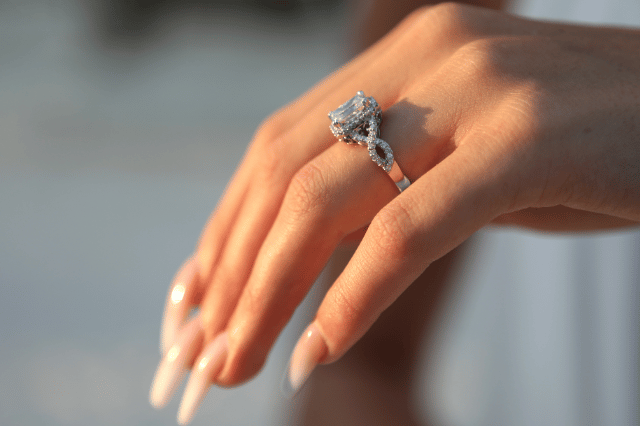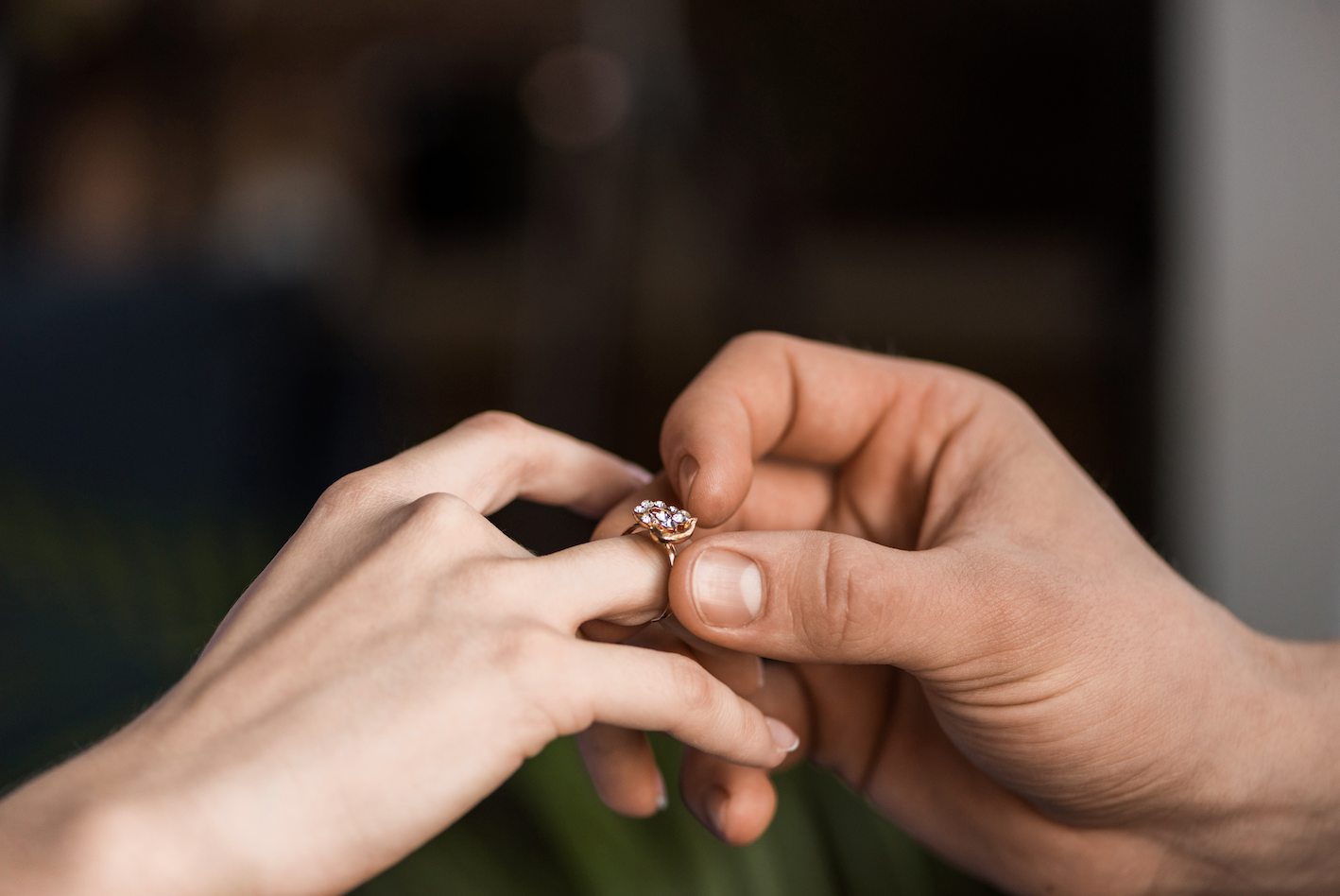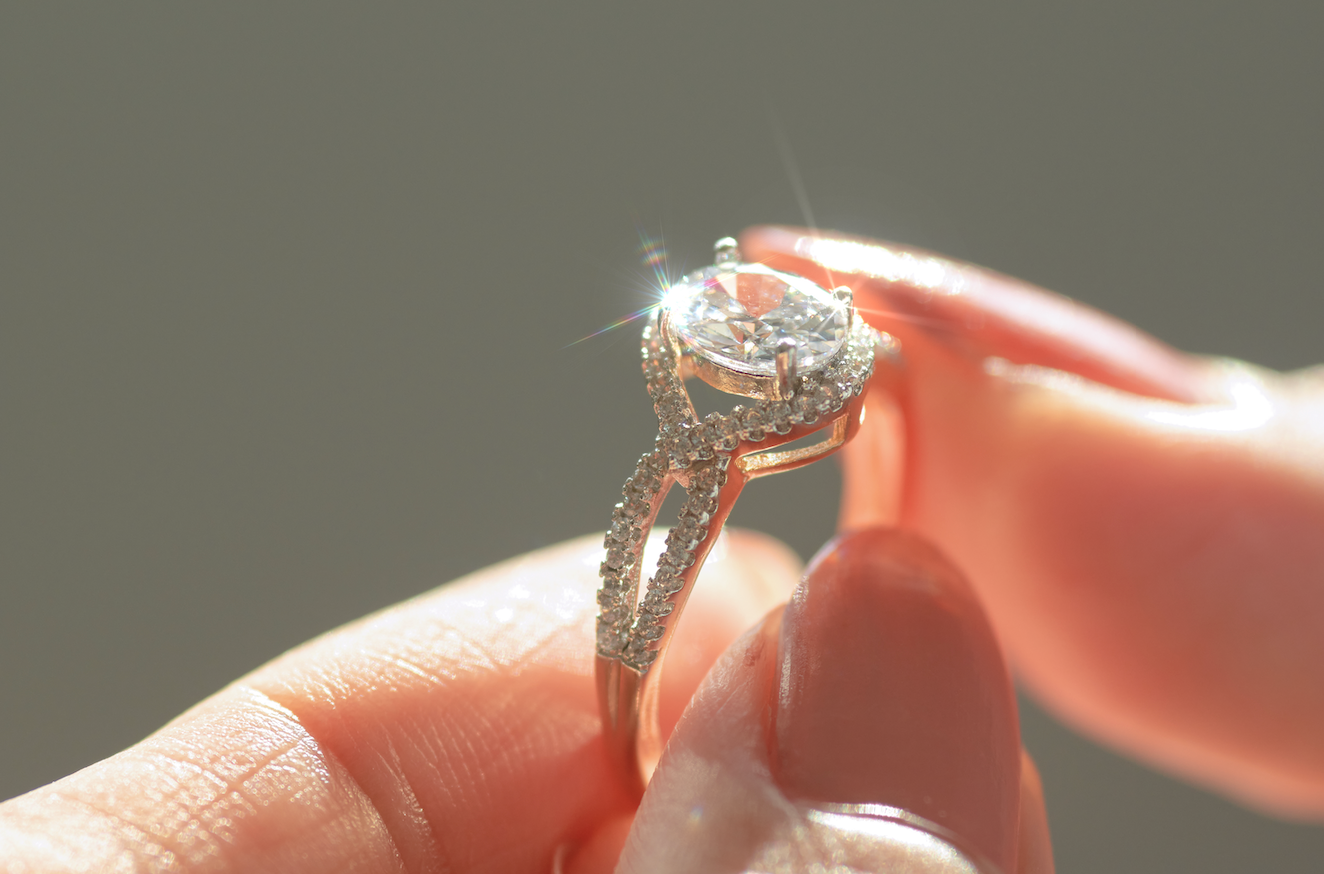melFor several hundred years, sapphires have been highly valued for their eye-catching colours and everlasting beauty. Sapphires rank second to diamonds in terms of hardness among gemstones. These precious stones are often used in jewellery and especially in engagement rings. Sapphires exist naturally in traditional blue as well as pink, orange, green, and parti sapphires, which display two or more colours.
Unfortunately, the market contains numerous fake sapphires and imitations due to their high value and popularity. In this guide, we’ll provide you with the knowledge for real sapphire identification, fake sapphire detection techniques, and different sapphire testing methods.
Sapphire Basics You Should Know
Before learning about fake sapphire detection methods, it’s important to have a basic understanding of sapphires.
- Natural Sapphires: These are obtained from the earth. Their creation processes spanned millions of years in the appropriate geological environment. They tend to have minor imperfections or inclusions.
- Synthetic Sapphires: These are lab-grown or man-made sapphires with the same chemical, physical and optical properties as natural sapphires. The only difference is that they are manufactured in a lab. They are genuine in composition but are not formed naturally.
- Imitation Sapphires: These stones appear to be sapphires but are made from less valuable materials such as glass, blue cubic zirconia, blue spinel, or tanzanite.
Initial Visual Inspection
Check for Flaws and Inclusion
Natural sapphires contain inclusions, or tiny imperfections. The stone may contain specks, thin lines, uneven color distribution, or even tiny crystals of other minerals that were trapped within the stone during its formation. You can use a jeweller’s loupe of at least 10x magnification to see them. However, it is also possible that the sapphire may be real even with no imperfections, as lab-made sapphires are often designed to be flawless.
Examine the Color
Genuine sapphires have deep, rich, and vivid color. Blue is the most common, but they come in various hues. The colour should be brilliant, not dull or too light. Natural sapphires sometimes display slight colour variations or colour zoning when viewed from different angles, whereas synthetic stones display very little colour variation.
Check for Air Bubbles
If air bubbles are visible within the stone, especially under magnification, this is a strong indication that it is fake. This may suggest that it is made of glass, as these bubbles get trapped during the manufacturing process of glass imitations. Real sapphires, whether natural or synthetic, do not typically have air bubbles.
Examine the Stone’s Transparency and Brilliance
A real sapphire should have good transparency and brilliance. A dull, clouded, or overly glassy appearance might indicate a fake. Light passes through the stone properly in a genuine sapphire, and it should look uniform and transparent.
Check the Surface Condition and Cut
Look at the surface for scratches. Sapphires are very hard, so they shouldn’t scratch easily. Also, observe the cut. While not a definitive test for gemstone authenticity, poorly cut stones or those with asymmetrical facets might be a red flag. Imitations often don’t receive high-quality cuts.
Basic Sapphire Authenticity Tests
You can perform several simple tests at home to help distinguish a real sapphire from a fake. These are:
- The Breath Test: Breathe onto the surface of the sapphire as if you were fogging up a mirror. Genuine sapphires, both natural and synthetic, will clear up within one or two seconds due to their high thermal conductivity. Fake stones, like glass, tend to retain the condensation for much longer, perhaps up to five seconds or more, because they have different thermal properties.
- The scratch test: Sapphires rank 9 on the Mohs scale of hardness, making them one of the hardest materials, behind diamond which is a 10. This means that a real sapphire should be able to scratch materials softer than itself, like glass or a steel nail, and should not be easily scratched by them.
- The light reflection test: Place a flashlight inside a dark space to reflect light on the sapphire. The reflection of light from a genuine sapphire should maintain the stone’s color tone. When a stone displays additional colors apart from its natural hue it is likely made of glass or synthetic materials.
- Water drop test: Place a droplet of water onto the stone’s surface. Water drops preserve their shape well on genuine sapphires because of their high surface tension yet slide away easily instead of sticking to glass or plastic surfaces.
Advanced sapphire testing methods
The following sapphire testing methods require professional expertise. Professional gemological evaluation should be sought from experts when testing sapphires for important purchases to determine their authenticity.
Microscopic examination: A gemological microscope allows gemologists to study both the internal features and external characteristics of sapphires along with their inclusions to identify authentic stones from fakes. Through this test, gemologists can identify if a sapphire exists naturally or was produced through artificial methods.
Refractive index (RI) measurement: The refractometer examines the way light bends during its passage through the gemstone material. The RI of natural sapphires is within the range of 1.76 to 1.78. Any major variations in refractive index readings between the measured and expected values indicate the stone is either a fake or heavily treated.
Specific gravity (density) test: Sapphires have a typical density of 3.95 to 4.03 g/cm3. Testing the standard readings will help you identify imitation stones. The hydrostatic balance functions as the testing tool for this examination.
Spectroscopic analysis: Spectroscopes examine how light absorbs when it passes through gemstones. Each element in the stone produces unique absorption patterns which generate different spectra to help identify the gemstone and detect potential treatments.
Ultraviolet (UV) light test: Some sapphires show UV light-induced fluorescence because they contain trace elements. The UV light-induced fluorescence patterns help identify the origin and treatment history between natural stones, synthetic stones and treated stones. A genuine blue sapphire emits blue or yellow, fluorescent light after being exposed to UV light.
Top tip: When a sapphire costs very little or lacks certification you should be skeptical about its authenticity.
After learning about these warning signs, you can confidently purchase your new jewellery. You can shop with assurance at Vinny & Charles – explore our collection of various beautiful, genuine sapphire jewellery pieces.





